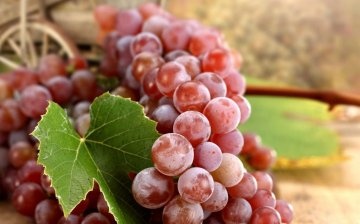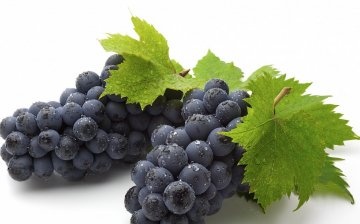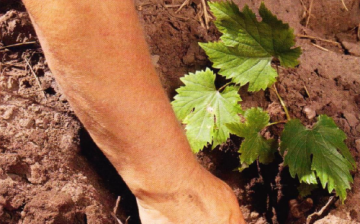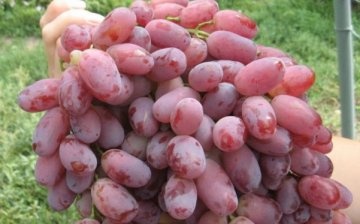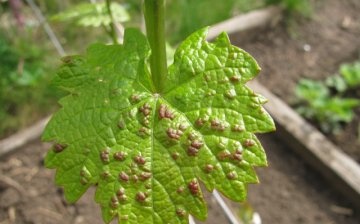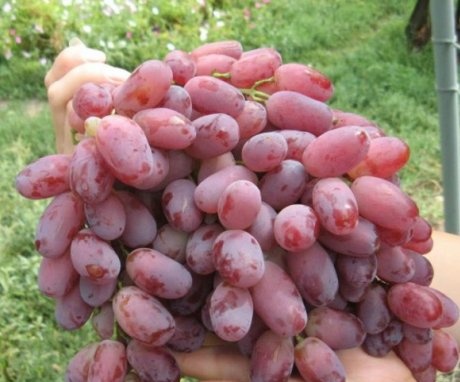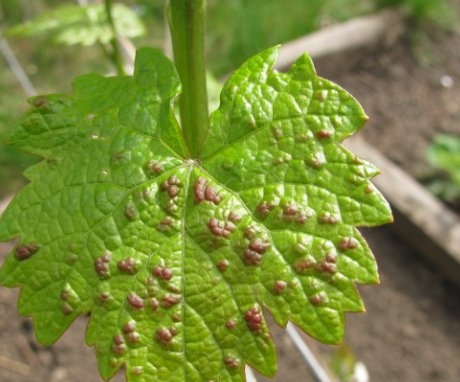The best early grape varieties: description and cultivation features
Early ripening of any berry is attractive to gardeners, especially those living in harsh climatic conditions. Grapes are no exception, because, once a southern berry, it has conquered new growing areas with colder atmospheric influences.
Content:
- Early grape varieties: species characteristics
- Features of planting and growing
- Grape care
- Diseases of early grape varieties and the fight against them
Early grape varieties: species characteristics
Many varieties have been bred by breeders grapes early ripening, so that residents of the middle and northern latitudes enjoy the berry grown by their own hands at the end of summer. The most common early maturing grapes are:
- By mid-August, small berries of the Tason variety are gaining final ripeness, which is characterized by juicy crunchy pulp in a thin skin shell. Attracts the taste of the variety - sweetness with the astringency of nutmeg.
- Pink Libya, created by the breeder Zagorulko, pleases with large fruits with a sweet and sour taste and delicate aroma. It is prone to defeat mildew, but you can heal the bushes with two treatments.
- The most picky early grape variety is considered to be Codryanka, which can also bear fruit in impoverished lands. Dark purple berries of the variety reach ripeness in 120 days, surprise with their impeccable appearance and pleasant taste. The variety is quite resistant to cold weather and diseases of the vine. The bunches are not damaged during transportation.
- White Delight belongs to the table early grape varieties, characterized by massive bunches of almost two kilograms. Berries of this type are long with a yellowish tinge, juicy, with a balance of sugar and acid. They are stored for a very long time without losing their visual appeal. When growing, it requires as much light and solar heat as possible, it does not tolerate frost well.
- The Violet variety is very fertile, which fully ripens in early September. Most of its shoots are fruitful. Round grapes are juicy, sweet, but not sugary. The variety is not afraid of cold snaps even below 20 degrees, but the disadvantage is its tendency to various bacterial lesions. When planting this type of grape, it is imperative to tie up the vine, often loosen the soil and weed the bushes.
- Super early varieties include Julian grapes, which matures in 95 days. It has berries of a deep pink color, medium size, slightly elongated. It tastes good with a lot of sweetness. It is resistant to both diseases and frost.
- The Aleshenkin variety pleases with a high yield: from one bush up to ten kilograms, you can collect light juicy berries. It tastes very sweet, without sourness. Gardeners appreciate its simplicity in growing and resistance to cold. The only drawback is susceptibility to disease and pests.
There are a lot of early grape varieties offered by specialists, and their selection continues. And which variety is suitable for a particular winegrower, for this you need to get acquainted with the taste characteristics of the species, its resistance to disease and frost, and methods of cultivation. And then you can already make a choice.
Features of planting and growing
To prepare for growing grapes with early ripening, it is necessary to choose a place in the garden that will be most comfortable for its growth. The vines are suitable for the southern slopes, which are best protected from cold winds.
When preparing the soil for planting, you need to know that early grapes grow well on light soils, neutral in composition.
As soon as the spring soil warms up, the prepared seedlings are lowered into a hole prepared up to 50 centimeters deep, after adding gravel drainage and nutritious soil to it. Before planting, the roots of a young plant can be immersed in a liquid clay solution with the addition of cow dung.
It is imperative to maintain a distance between plantings of up to two meters, not forgetting about supports for shoots. The right type of soil and the right planting will allow you to feast on ripe bunches in the summer months.
Grape care
Throughout the growing season, grapes are fed either with manure, or chicken droppings... You can prepare a mixture for additional nutrition of the vine yourself: compost from rotted plants with the addition of peat, manure and hay.
In order to prevent shedding of the ovaries, a foliar top dressing boric acid, which is carried out twice: before the opening of the flowers and after the appearance of the berries. Watering it is abundantly carried out in the initial period of grape growth, in the second - they reduce the access of moisture, because its excess will lead to a delay in the growth of shoots, which will not have time to ripen before frost.
One of the main points of growing early grape varieties is their timely release from the covering material after wintering.
Here it is important not to rush when the first warmth comes, otherwise the subsequent frosts will kill the overwintered plants. Only when comfortable weather is finally established, you can open the vine by treating it with a solution of vitriol, copper or iron. This will help avoid diseases and lead to a delay in bud opening. No special effort is required to grow vineyards.
Diseases of early grape varieties and the fight against them
Many early ripening grape varieties are prone to diseases:
- Oidium, or powdery mildew damages the green parts of the vine. Shoots and leaves covered with a gray-ash bloom smell of rot, the inflorescences dry. To avoid this ailment, the vine is treated before the formation of flowers drugs Quadris or Flint, then repeat the operation several times over the summer.
- A dangerous fungal disease with mildew affects almost all ground parts of grapes. On the leaves above and below, yellowish or greenish oily spots of various shapes are visible. If you do not fight the disease, the leaves will dry out and fall off. Plants are infected with downy mildew either in the rainy season or in hot weather. To avoid infection, it is necessary to better ventilate the vineyards, fight weeds in time, and remove and destroy the affected leaves.
- Early grape varieties often develop anthracnose, grapepox, the external symptoms of which appear on the greenery and berries of the plant. The affected parts fall out over time, forming holes on the sheets, and brown spots with a red rim pushed inward are visible on the fruits. Without treatment, the plant may die. To fight the disease, use spraying Bordeaux liquid several times during the growing season of the grapes in the morning and evening.
Diseases of the grapes can be avoided if the vine is properly cared for.
More information can be found in the video.



